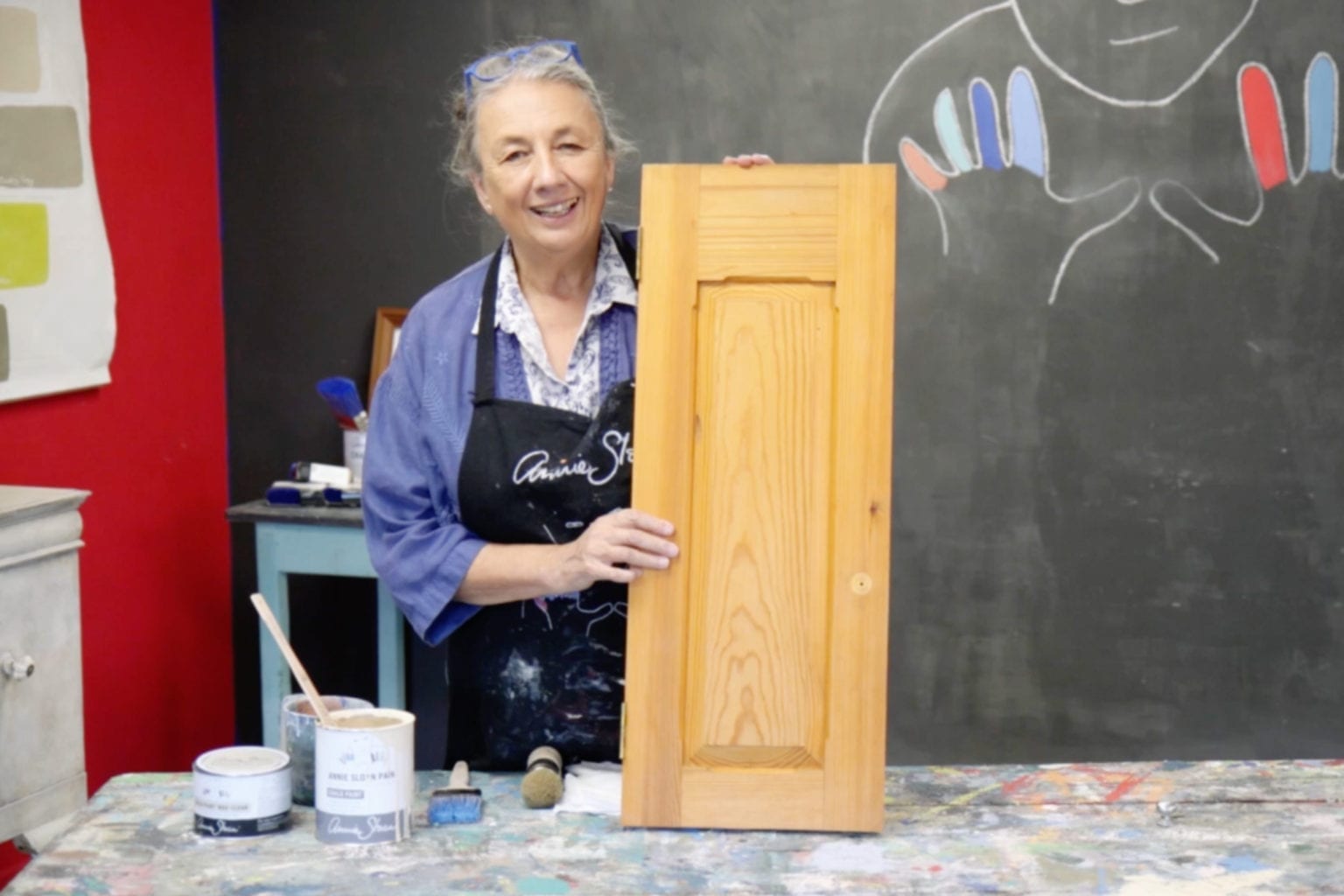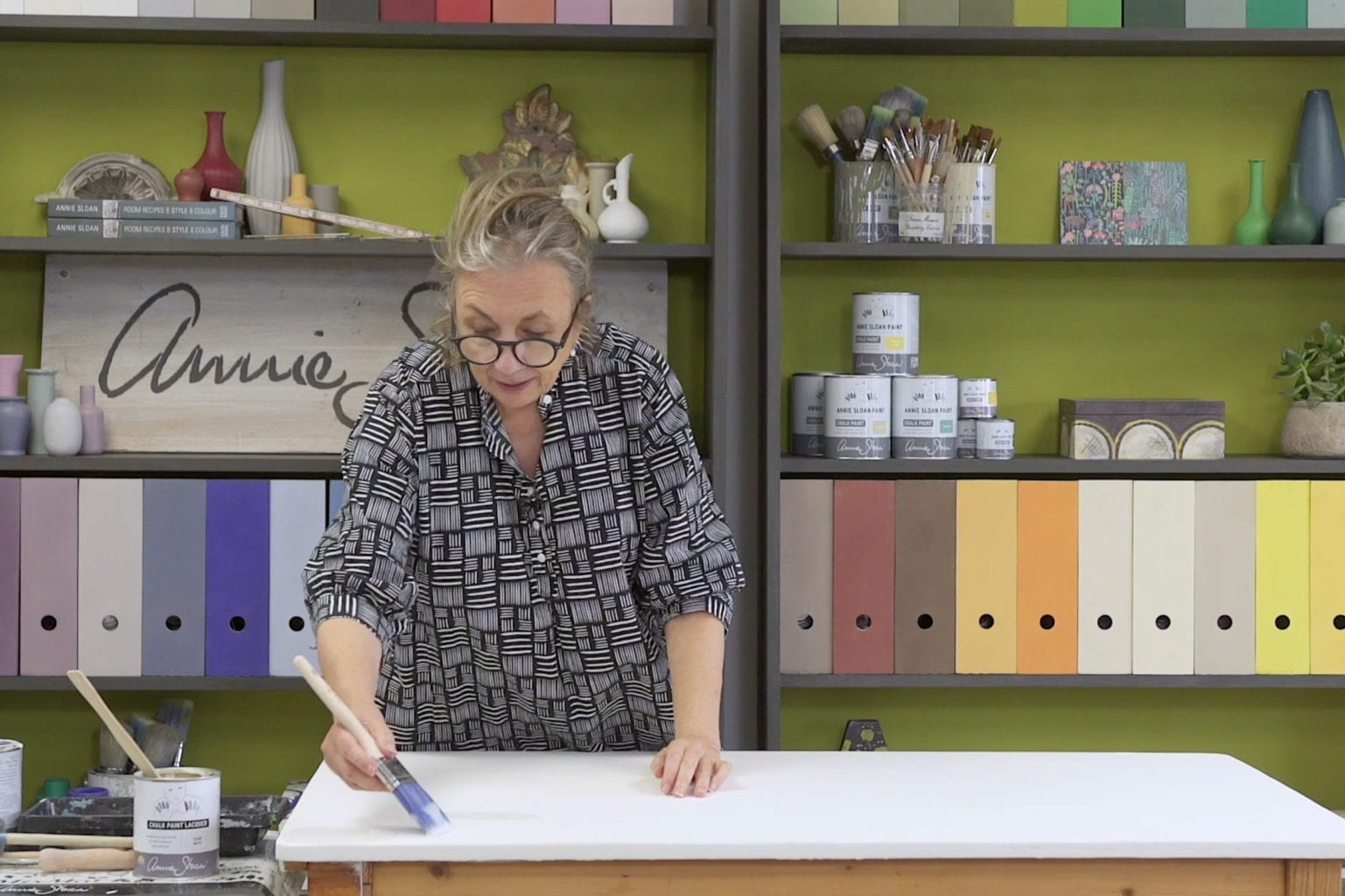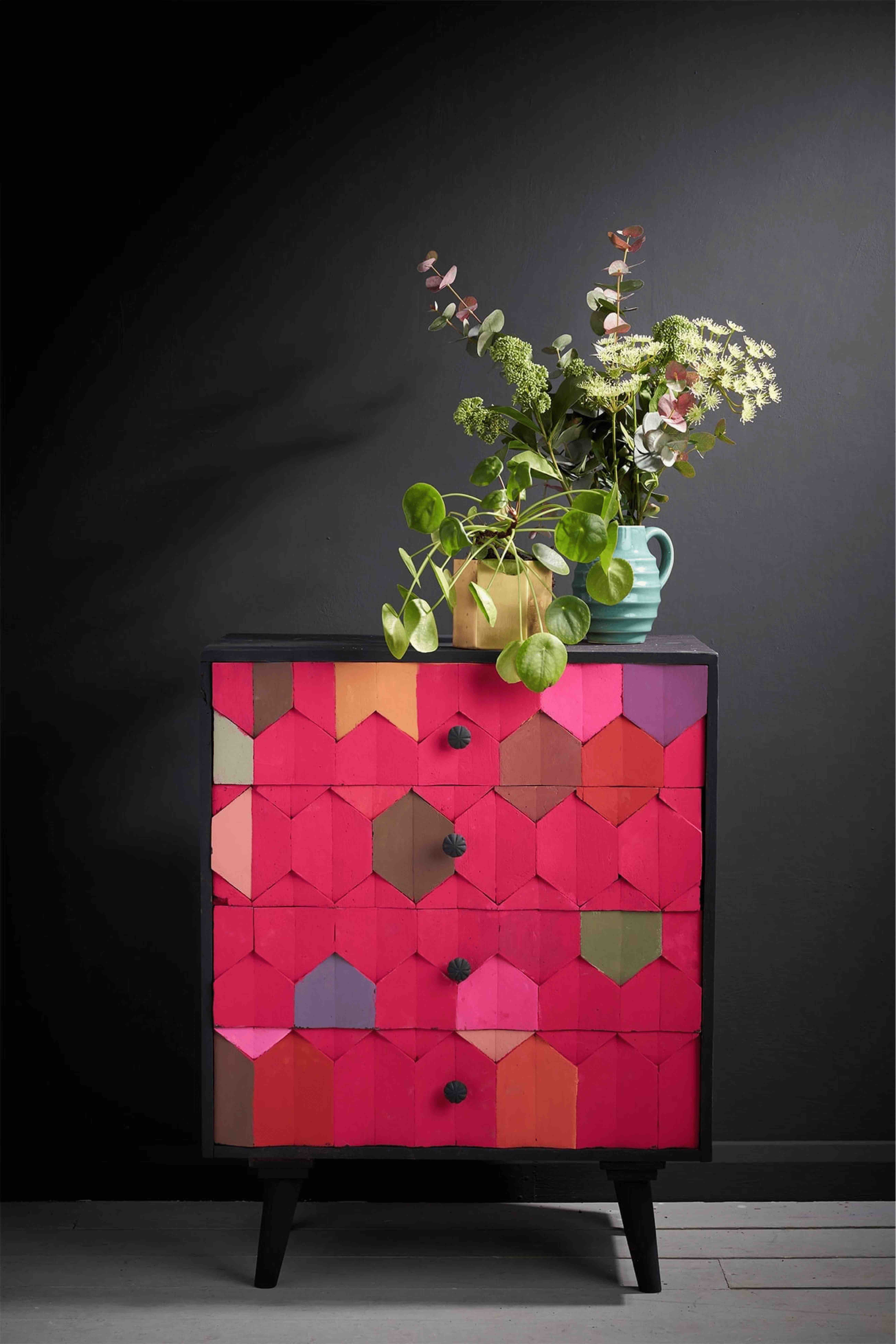In this step-by-step guide, you’ll learn how to paint laminate kitchen cabinets. It’s a simple way to update the heart of your home for a fraction of the cost of a kitchen refit. If you like the layout of your kitchen, but hate the colour of your cupboards, this is the how-to for you.
Chalk Paint® has exceptional sticking power. So with the right knowledge up your sleeve, you’ll be able to give your kitchen a makeover without having to remodel. This is also a great technique if you’ve just bought a new home and your budget won’t stretch to a whole new kitchen just yet. Whatever your motive for repainting your kitchen, there’s no reason to suffer a colour palette you don’t love!
Step by step guide to painting on laminate with Chalk Paint®
- The first step is to clean your cabinets. Kitchen cabinets are subjected to oils and greases from cooking, which need to be cleaned off before painting. To clean them, use warm soapy water only, avoiding any harsh chemicals that may react with the paint.
- If the laminate you’re painting is really shiny, give it a quick sanding. A light sanding ensures the paint has a textured surface to adhere to.
- Add a little water to your chosen Chalk Paint® colour if the paint is too thick. Just be sure to mix the water into the Chalk Paint® very thoroughly.
- Apply a coat of Chalk Paint®. Feather as you go to remove brush strokes. To feather, hold the brush at a 90 degree angle to the surface you are painting. Gently flick the brush backwards and forwards over the top of the paint. This will help you achieve a flat, untextured finish. Do not press hard or over brush. If you keep brushing once the paint has started to dry, you will begin to remove Chalk Paint® from the laminate rather than applying it.
- If you need a second coat of paint, make sure you leave plenty of time for the first coat to dry. Laminate isn’t as absorbent as wood so it will take longer to dry.
- One your paint has dried, it’s time to either wax or varnish your finish. You can choose Chalk Paint® Wax for a mellow finish. For extra durability, try Chalk Paint® Lacquer, which can be applied with a brush, roller or even spray gun.
Painting laminate kitchens needn’t be a headache. Now you know how, you can see how quickly the colour of your kitchen can be updated. And how cost effectively! If you’d like to try this technique, make sure you buy your materials from your local Annie Sloan Stockist. Every Stockist is trained to offer expert guidance and advice on everything from colour selection to painting techniques. Finally, if you’d like explore using varnish on your laminate, Annie has a tutorial on using Chalk Paint® Lacquer on cabinets for you too!


